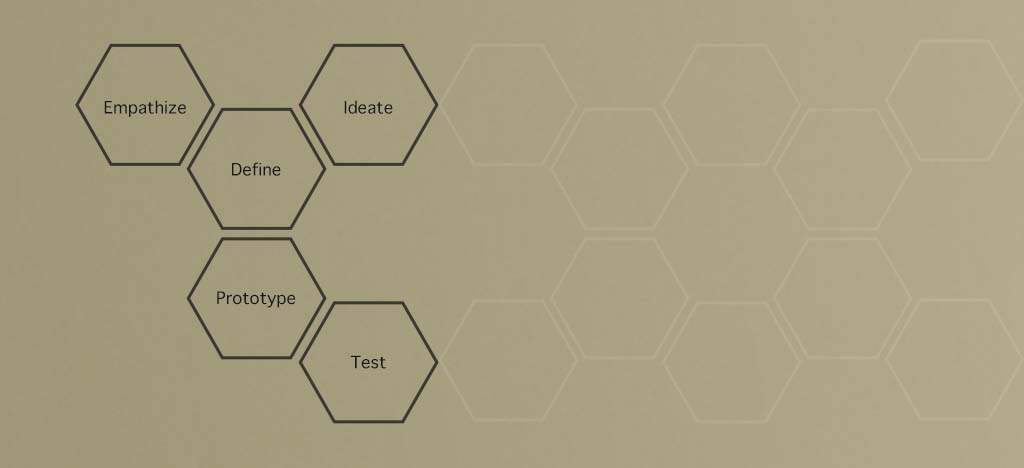“The older you get as a designer the more you realize that you just don’t know anything… If you embrace that you don’t know, but you know how to go find out, that makes you very effective.”
Daniel Burka (GOOGLE VENTURES)
What is Design Thinking?
Design thinking is a human-centered approach to understanding the user and providing creative and innovative solutions to meet their demands.
Tim Brown of IDEO defines design thinking as a human-centered approach to innovation that draws from the designers toolkit to integrate the needs of people, the possibilities of technology and the requirement for business success.
The success of a web development project is dependent on if the web designers and developers understand the user through research and testing instead of relying on historical data or making risky bets based on instincts. Design Thinking helps us observe and develop empathy with the target user, uncovering their deep needs and insights. This guides us to creating better human-centered user interface (UI) and overall user experience (UX).
How to use?
Stanford d-school teaches the application of a framework to start a design thinking process. The framework has 5 phases which are interchangeable and should not be followed sequentially for all design problems. They can occur in parallel and repeated iteratively.

1. Empathize
Empathy is at the core of design thinking and requires the designer to dive into the user’s experience through research. This phase helps to put away bias and concentrate on the user’s need.
Empathy can help us understand the right website to develop through gaining insights into the user’s experience and how they can be best served.
Empathy is essential to the the success of a website’s goals. Developing solutions in isolation, without essential insights about the users may lead us to create content that are not useful to the target market.
For example, many MP3 players have come and gone without making any impact, whereas the iPod was successful at providing a technological solution and great user experience to a demanding market which resulted in Apple leading the market in portable electronic devices.
2. Define
Information gathered at the empathize phase is used to state the user’s needs and problems. Who is your user (specific details should be provided), what are their needs (specify and itemize their needs) and what are their unique problems (starting from the least to the greatest) should be analyzed and synthesized.
The information gathered after analysis can help us create a point of view (PoV). A PoV involves reframing the problem into an actionable problem statement.
A problem statement can be framed by declaring the [user … (who are the target users)] needs [need … (usually a verb stating their needs)] because [insight … (how it will improve their overall experience)].
3. Ideate
In Ideation for Everyday Design challenges, Nelson Norman Group defines ideation as the process of generating a broad set of ideas on given topic, with no attempt to judge or evaluate them. This is the brainstorming phase, many ideas are generated to solve the problem statement. This is the transition phase from learning about the user and the problem to finding solutions by filtering through the best ideas.
Designers focus should be on the quantity of ideas rather than quality.
4. Prototype
For many designers prototyping is where the fun begins. This phase also known as the experimental phase helps us learn, solve disagreements and test hypotheses quickly and with minimal repercussions. Prototypes are built with user in mind, by testing against the expected user behaviors and user needs.
When a software is in development, paper prototypes are produced which the user can gradually work through in order to demonstrate to the designer or developer how to tackle and implement the best solutions.
The user performance should be measured base on specific elements and reaction to overall design.
5. Test
Prototypes are tested, redefined and altered to find or rule out alternate solutions. It can be done in parallel with the prototype phase. Our PoV about the user and their interactions with our product is refined. It is very important that we test the prototype and not the user.
Testing with the user allows exploration and correction of usability issues raised during interaction. Usability refers to the ease with which a user can use a product to accomplish their goal. A website success is dependent on its usability; how the user can accomplish their goals when they interact with the website and lead to conversion every time.
Conclusion
The goal of design thinking is to gain a deep understanding of the users and the ideal solution that works. How a problem is stated and reframed can inspire a movement towards better innovative solutions.
The 5 phases of design thinking – Empathize, Define, Ideate, Prototype and Test; These phases are meant to be fluid, in parallel or interative loops and flexible not sequential to facilitate the most learning and value.
The ideal end point of design thinking is when the product satisfies the 3 test of desirability, feasibility and viability.






